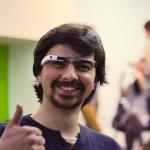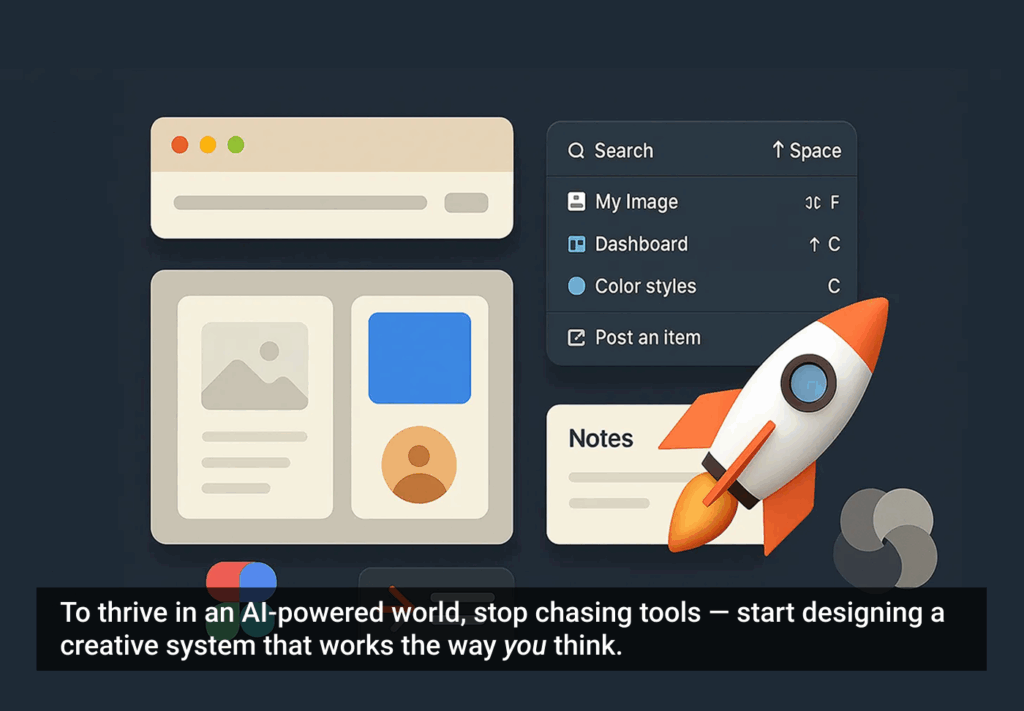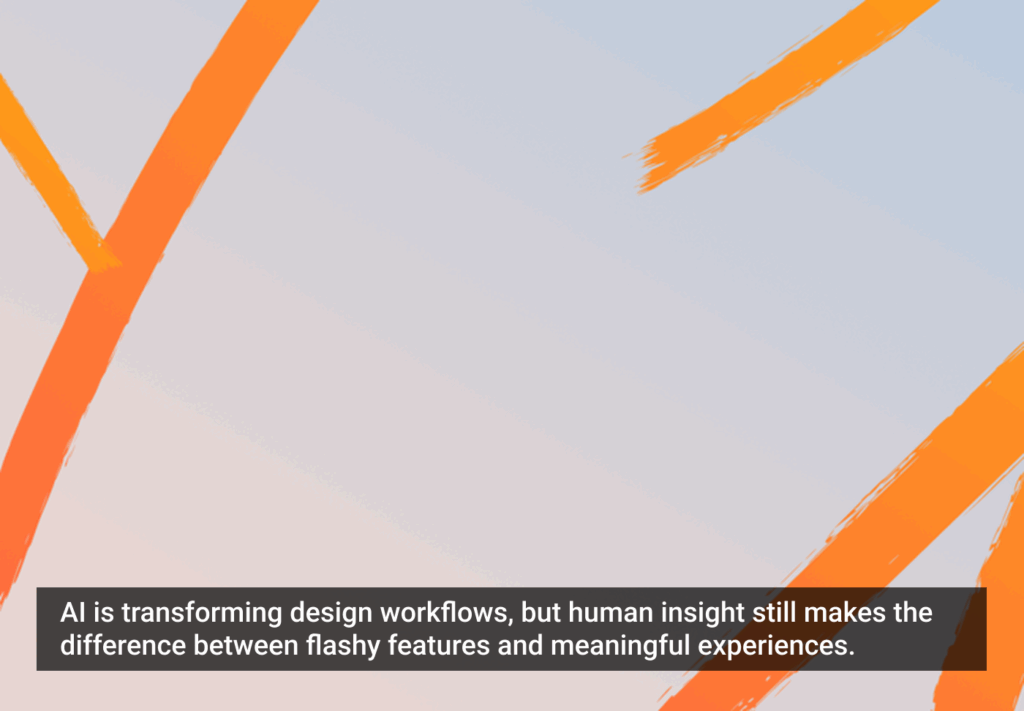Where mobile technology is concerned, screens are getting smaller, physical keyboards are out, and interfaces are granting our hands more and more freedom. Interaction with wearable technology is completely different from what we’re used to, and these interactions are different on each type of wearble device.
Different UX Considerations for Different Devices
Smartwatches
With approximately 1.5 inches of display real estate, smartwatches are used with the help of the index finger, which takes up to a quarter of screen space when pressing. As people are often on the move when using smartwatches, their small screen size makes it more difficult to tap on a specific area of the screen. This limits the amount of tappable areas to 4-5 buttons for seamless usage, encouraging designers to divide screens into smaller modules as much as possible and to leverage other input methods.
For example, swipe: using all four swiping directions we could build a much more adapted structure with just a few buttons on each screen. And what about using accelerometer, gyroscope, or voice input? Apple has some great innovations in this space, such as digital crown and touch force sensor. Designing for smartwatches means tapping into these types of resources to create a new native experience.
Smartglasses
In case of smartglasses, the screen is separate from the touchpad and located much closer to our eyes. Both hands are free and we have a new player: a head-mounted camera, which creates some different usage patterns. The contexts in which people are using smartglasses usually involve a specific activity, such as cycling, playing paintball, conducting a medical operation, unloading goods at warehouse, serving airline VIP customers, etc.
That said, when designing for smartglasses, we have to remember that original task is the user’s main priority—the smartglasses serve as an assistant that can help users perform the task more efficiently. Some best practices include keeping the interaction window shorter, filtering out notifications to only context-important alerts, tapping into voice-based control to keep hands free, and avoiding heavy computations, as they can make the device heat up to uncomfortable level.
Activity Trackers
As for activity trackers, there are fewer interaction opportunities compared to smartwatches and smartglasses, as there’s usually no direct way to input or receive any information from the device.
But the true power of activity trackers comes with the data which they collect. We can now create applications that tap into such resources as our day-to-day movement patterns, heart-rate statistics, sun exposure, humidity around us, and much much more. There are now many apps for health and fitness, but there are many more apps set to leverage this kind of data on the horizon, in finance and insurance industries, for example. This field for experimenting is huge, as we delve into the power of data.
UX Considerations Across Devices
Battery Life
A dead watch is even sadder than a dead phone: it is just a piece of plastic with blank screen stuck to someone’s wrist, making them look silly. Some of today’s smartwatches have batteries that can run up to five days, though their lower levels of sophistication are a factor in this extended battery life. But if we think of more advanced scenarios, such as using smartwatches as a door key or a wallet, a sudden battery death could lead to a very uncomfortable situation.
Design is a key differentiator of wearables, which are, first and foremost, something we wear
The situation is worse with glasses, which can live barely a day without a recharge, unless the user is recording video, which kills the device in less than an hour. Some products use external charger as a solution, which connects to smartglasses through USB port and has to be worn in the pocket or a backpack. While this solution may be feasible for enterprise market it has no chance of surviving in a consumer market.
Considering each device’s usage patterns, glasses actually have fewer requirements for a battery life, as we will probably only use them occasionally. Meanwhile, watches and wristbands almost integrate with our bodies as we use them daily. Therefore, they are expected to be taken off rarely and to live longer on a single charge.
On the other hand, wearables actually prolong our phones’ battery lives. The screen itself is the biggest energy hog on a smartphone, and wearables decrease the need to turn the phone’s screen on.
Visual Design
Design is one of the key differentiators of wearables from other technologies. Really, when has the way a piece of technology looks been more important than its functionality? Wearables are, first and foremost, something we wear. And they are supposed to exist as a reflection of our own perceived selves, to show our status, and to create a first impression.
Wearable tech will have to align with users personal styles and match our shoes, shirts, or bags. This is an interesting challenge: considering that women usually have smaller watches, manufacturers might have to make the display smaller in order to conform their taste and style. This will have a significant impact on device fragmentation and will make lots of developers happier (if you know what I mean).
Social Acceptance
Wearable technology seems to break certain social protocols. Google Glass has faced some negative reactions, and I’ve personally experienced a few middle fingers thrown my way when walking down a street wearing the device. Almost any time I put it on I feel the stares coming in from all around and am usually asked by someone if I am filming them.
Similar things happen with smartwatches. As was recently pointed out at Google I/O, we are checking our phones for updates around 100 times per day. Having a smartwatch does help, but it does not solve the issue. Personally, I have switched my habit of checking the phone to checking the watch. This does save some time, but puts me in a silly situation. This move—checking the watch—is often perceived as if I am in a hurry or not interested in what is going on, indicating that I am eager to leave. Although I usually do not have such intentions, this puts me in jeopardy with my friends.
Wearing unusual devices on our faces and talking to our wrists seems odd in today’s society. But in the not-too-distant-past, having a conversation on a mobile phone was seen as odd, taking pictures with a phone seemed outlandish, and staring at a mobile device during a conversation seemed unacceptable.
Conclusion
Wearables are a part of the mobile evolution—an evolution with the goal of making us more productive. This elevated productivity can be achieved in different ways: by advanced analytics of our everyday patterns or by allowing quicker access to information. This can be done in different environments: smartwatches and wristbands in our everyday lives, smartglasses and smart costumes for professional and enterprise use. Whatever the device, designers need to weigh certain considerations, such as battery life, design, context, and social acceptance. That’s a lot to consider, but these new technologies have a bright future.
Although wearables are in their infancy, they are great candidates for widespread adoption and use. The more interesting question is what happens when they reach their zenith. Will their value overcome the resistance? How will we deal with the information overload on the horizon? And what will the next wave of mobility look like?
Check out Markiyan Matsekh’s article exploring The Who, What, When, Wear, and Why of Wearable Technology,
The collage, “As her last breath exited her lungs, there was a fog. And then there was this.” used courtesy of Jay Riggio







